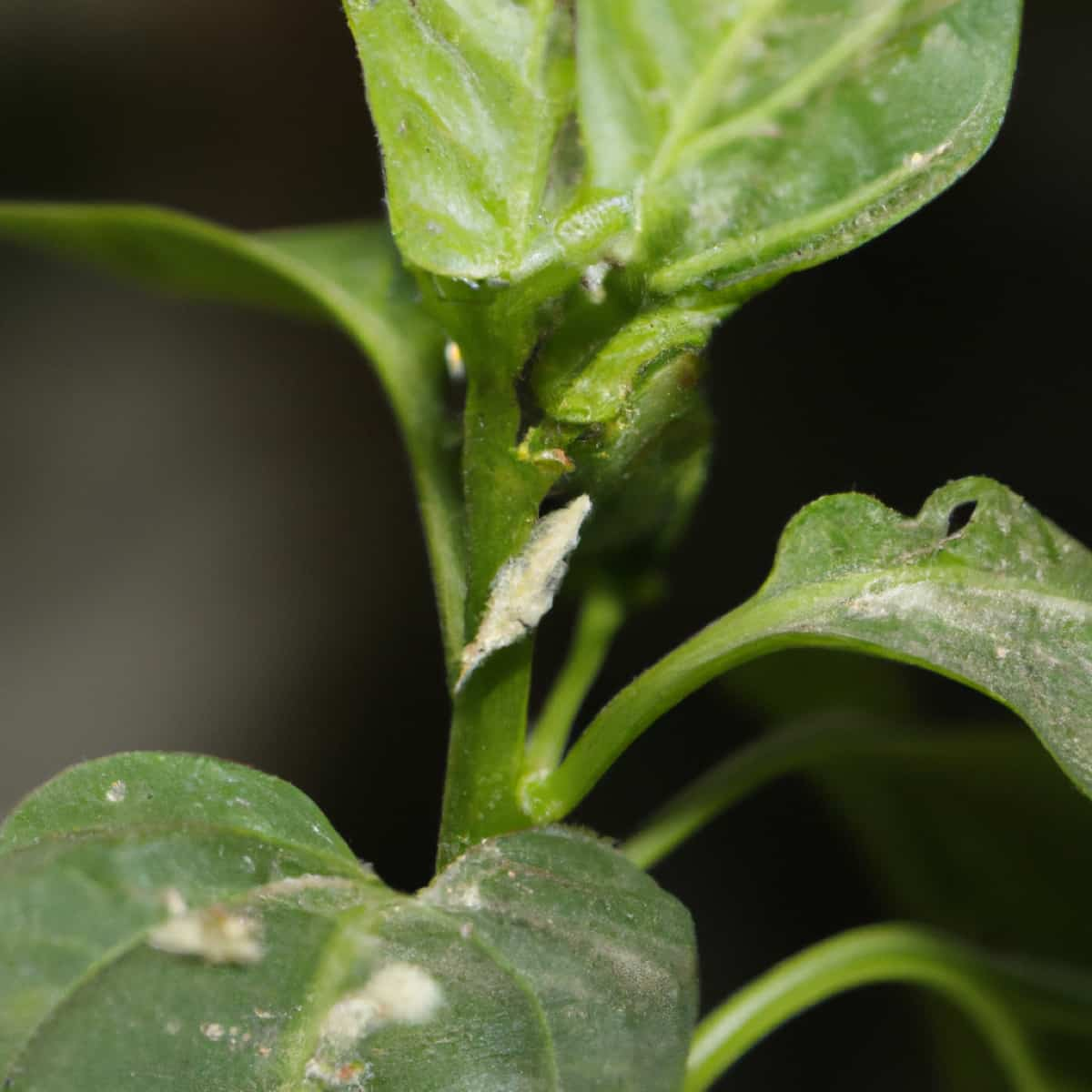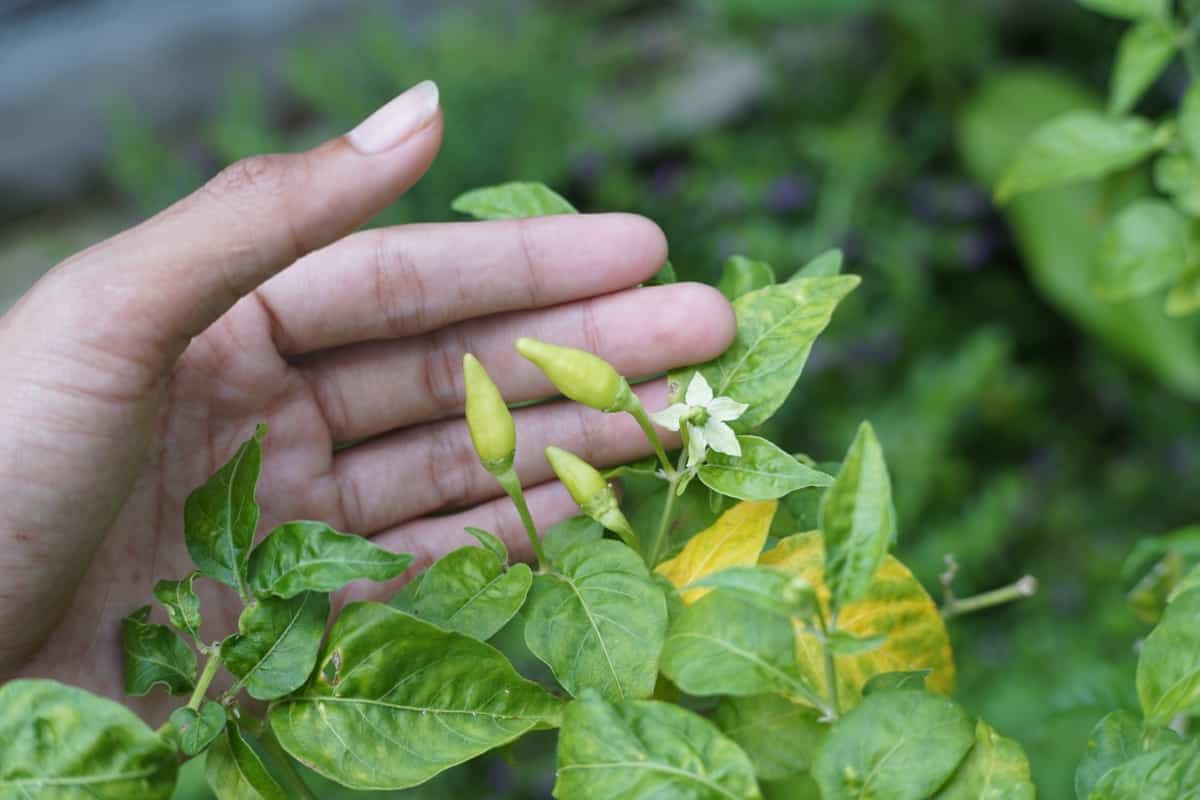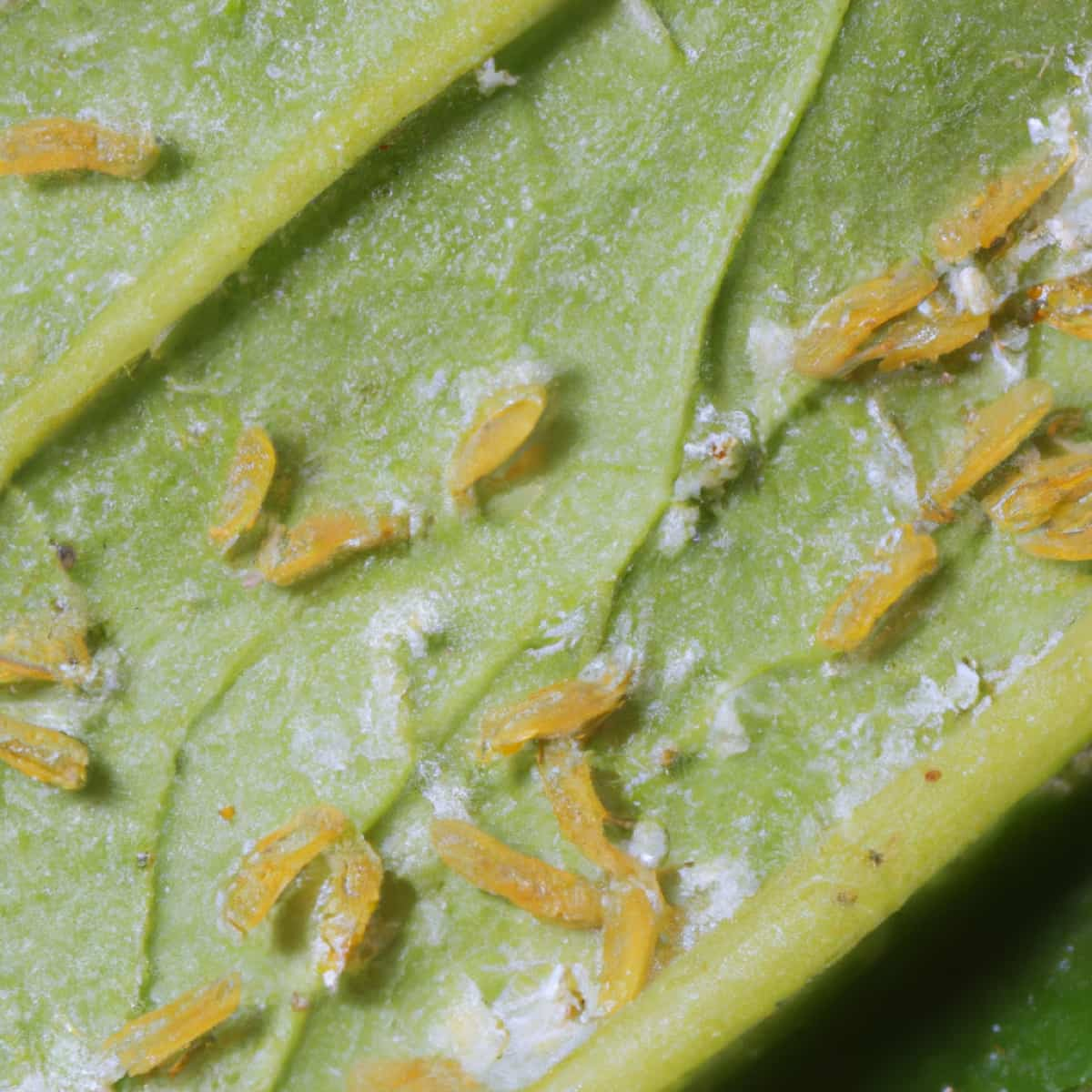The Chilli Thrips, Scirtothrips dorsalis, belonging to the Family Thripidae of the Order Thysanoptera, is a tiny insect pest of Chilli crops, causing significant yield losses and reducing the quality of the crops worldwide. The Chilli Thrips are native to Southeast Asia. These invasive pests cause damage to Chilli crops by feeding on the plant’s tender shoots, leaves, and flowers. The Chilli Thrips can transmit the leaf curl mosaic virus that further weakens and damage the plants.

The high reproductive rate of Chilli thrips and their ability to develop insecticide resistance makes them difficult pests to control. Effective management strategies are essential to minimize the impact of this pest on Chilli production. To effectively manage this pest, it is important to understand its life cycle, its preferred habitats, and the best methods for controlling it. This article will provide an overview and discussion of the Chilli Thrips Pest in Chilli crops, including its symptoms, identification techniques, and control.
Chilli Thrips Management
Life Cycle of Chilli Thrips Pest in Chilli Crop
The life cycle of the Chilli Thrips pest has four stages. They are egg, larva, pupa, and adult. The female Chilli thrips lay eggs on the tender tissues of the Chilli plant, such as the buds and leaves. The eggs hatch within 2-4 days, depending on the temperature. After hatching, the Chilli thrips larvae emerge from the eggs and feed on the plant tissues. The larvae pass through two instars, molting their skin and growing larger.
Once the second larval instar is complete, the Chilli thrips enter the prepupal stage, during which they stop feeding and become inactive. The prepupal stage lasts about 24 hours, after which the Chilli thrips enter the pupal stage. During the pupal stage, the Chilli thrips develop wings and reproductive organs. The pupal stage lasts for approximately 2-3 days.
After completing the pupal stage, the Chilli thrips emerge as adults. The adult Chilli thrips can fly and disperse long distances to find new host plants. The females begin laying eggs within a few days of emerging from the pupal stage. The entire lifecycle can be completed in as little as 20-30 days under favorable conditions.
Occurrence of Chilli Thrips Pest in Chilli Crop
- Location of Chilli Thrips Pest: This pest infests Chilli crops in India, Africa, Sri Lanka, China, Thailand, Vietnam, Indonesia, the United States, Mexico, Brazil, Colombia, Ecuador, the Philippines, and Australia.
- Host Range: The Chilli Thrips pest infects crops like Chilli, Peppers, Tea, Grapes, Sweet Potato, Peanuts, Strawberry, Mango, Guava, Tomato, Cotton, Sorghum, Castor, Eggplant, Beans, Cucumbers, Melons, Bottle gourd, Prosopis, and Water Lily.
Factors Favoring the Population Increase of Chilli Thrips Pest in Chilli Crop
- The Chilli Thrips thrives in warm and humid conditions. The optimal temperature range for the development of the Chilli Thrips Pest is between 22-33°C, and it becomes inactive at temperatures below 10°C.
- Prolonged periods of high humidity levels of around 80-90% provide the ideal conditions for the pest to feed, reproduce, and thrive in Chilli crops.
- Rainfall or excessive moisture on the leaves can increase the humidity levels, promoting the reproduction and survival of the pest.
- The pest prefers the Chilli plant’s young and tender leaves, buds, flowers, and fruits. So, seedlings, young plants, flowering, and fruiting stages are highly susceptible to infestation.
- Poor crop management practices, such as inadequate fertilization, watering, and pest control measures, can weaken the Chilli plant’s immune system and make it more susceptible.
- Overcrowding and inadequate ventilation in Chilli plantations can also create a conducive environment for the pest.
Identification of Chilli Thrips Pest in Chilli Crop
- Egg: The eggs are white and elongated, measuring approximately 0.2 mm long.
- Larva: The larvae are small, yellowish-white, and approximately 0.3-0.4 mm long.
- Adult: The adults are tiny, measuring approximately 1.2-1.5 mm long, light yellow or brown, and have wings.
Damage Symptoms of Chilli Thrips Pest in Chilli Crop
- The pest sucks the sap from the vascular bundles and causes the leaves to crinkle, curl upward, and wilt from the plants.
- The affected plants show elongated petioles and buds that become brittle and fall off the plant.
- The feeding causes leaves to curl and turn brown, flowers to drop, and fruit to become misshapen, discolored, and stunted.
- Other symptoms include stunted plant growth, reduced yield, flower production, fruit set cease, and even death in severe infestations.
In case you missed it: Chilli Yellow Mite Pest Management: Symptoms, Treatment, Chemical, Biological, and Organic Control

Percentage of Yield Loss in Chillis Due to Chilli Thrips Pest
- In India, the yield losses due to Chilli Thrips pests are 20-60%. In Thailand, the percentage of yield loss is 30-50%. In Vietnam, the losses are 30-70%. In Sri Lanka, the losses are 30-50%. In Indonesia, the losses are 30-50%. In Africa, it is 40-100%. In the United States, it is 20-30%. In Mexico, it is 20-50%. In Brazil, it is 10-30%. In China, it is 10-50%.
- In Colombia, the losses are 30-50%. In Ecuador, it is 30-50%. In Australia, it is 10-50%. In the Philippines, the yield losses are 20-50%. The Economic Threshold Level (ETL) for the Chilli Thrips pest is set at 2-3 thrips per leaf.
Cultural Control of Chilli Thrips Pest in Chilli Crop
- Rotation with non-host crops such as cereals, legumes, and vegetables can disrupt the pest’s life cycle and reduce its build-up in the soil.
- Mulching the soil can help retain moisture and cool the soil surface.
- Regular pruning of infested leaves and branches can help reduce the pest populations.
- Planting Chilli in raised beds or ridges can improve soil drainage and prevent waterlogging, which can favor pest development.
- Removal of crop residues and weed hosts from the field can prevent the pest from overwintering and breeding in the crop.
- Yellow or Blue Sticky traps can be used to monitor the presence and population of Chilli Thrips Pest in the crop.
Biological Control of Chilli Thrips Pest in Chilli Crop
- Predatory mites such as Amblyseius swirskii, Neoseiulus californicus, and Phytoseiulus persimilis feed on various life stages of Chilli thrips and can reduce pest populations by up to 80%.
- Predatory thrips, Scolothrips indicus, and Franklinothrips megalops can reduce the pest population.
- Parasitoids such as Thripobius javae parasitize Chilli thrips eggs, reducing pest populations by up to 60%.
- Entomopathogenic fungi such as Beauveria bassiana and Metarhizium anisopliae can also control the pest population.
Chemical Control of Chilli Thrips Pest in Chilli Crop
- Spray insecticides on the crops like Carbofuran, Phorate, Phosalone, Acetamiprid, Imidacloprid, Dimethoate, Fipronil, and Methyl Demeton, on the foliage to control the pest.
- Seed Treatment – Treat the seeds with Imidacloprid to prevent pest incidence.
- Dipping – Dip the roots of the seedlings in Monocrotophos for 20 min before transplanting them to the main field.
- Dusting – Dust the Carbaryl powder in the early mornings.
Organic Control of Chilli Thrips Pest in Chilli Crop
- Plant extracts from neem, garlic, cinnamon, ginger, turmeric, hot pepper, and Chilli can be applied to manage the infestation.
- Spinosad produced by the soil bacterium Saccharopolyspora spinosa should be sprayed on the leaves and stems of Chilli plants to control the pest.
- Biopesticides such as Bacillus thuringiensis soil bacterium will help to control the pest by intoxicating it.
- Tea tree oil can help to improve the plant’s resistance to pests and diseases, while citrus oil helps to repel pests and improve plant health.
- Mineral-based insecticides such as diatomaceous earth and kaolin clay can control Chilli thrips by physically disrupting the pest’s cuticle and causing dehydration.
Preventive Measures for Control of Chilli Thrips Pest in Chilli Crop
- Planting healthy and resistant varieties can prevent pest incidence.
- Intercropping with green manure crops like Sesbania will provide shade to Chilli and regulate the thrips population.
- Do not follow the mixed cropping technique with onion, as both are susceptible to thrips.
- Do not plant Chilli after the sorghum crop, as it builds up the pest population.
- Monitor the crops regularly to identify pest infestation in the early stages to keep it under control.
In case you missed it: Mosaic Complex Management in Chilli: Symptoms, Treatment, Chemical, Biological, Natural, and Organic Control

Conclusion
The Chilli Thrips Pest, Scirtothrips dorsalis, is a polyphagous pest that affects Chilli crops worldwide, causing significant yield losses. It is a challenging pest to control due to its rapid reproduction, high fecundity, and ability to develop resistance to insecticides. Integrated pest management practices can provide sustainable and effective control of Chilli thrips in Chilli crops. Effective pest management is crucial for the sustainable production of Chilli and other crops, ensuring food security and economic prosperity.
- Beneficial Insects in Pest Management
- Natural Solutions for Pest Control in Flower Gardens
- Types of Fungicides Used in Agriculture
- Common Issues in the Fruit Development Stage of Pomegranate Farming
- Fruit Development Issues in Papaya: Easy Solutions and Treatment
- Soil-Borne Diseases and How to Protect Your Plants
- Practices to Prevent Disease Spread in the Garden
- From Wilted to Thriving: How to Treat Root Rot Naturally in Houseplants
- Natural Remedies to Cure Brown Spots on Fig Tree Leaves